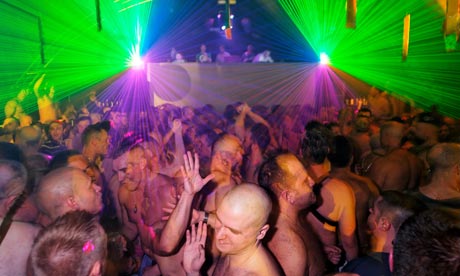
Gay men and lesbians are far more likely to put their health at risk from drug misuse than heterosexuals, according to a Home Office-funded report that suggests there is an urgent need to rethink how addiction agencies and doctors support minority groups.
The report, by the UK Drug Policy Commission, to be published on Monday, claims drug services are of little relevance to many in lesbian, gay, bisexual and trans-sexual (LGBT) groups. The Impact of Drugs on Different Minority Groups: A Review of the UK Literature argues that a better understanding of drug use within diverse minority communities is needed if lives are to be saved. It finds the LGBT community tend to be early users of new drugs and says improving links between such minorities and health officials would identify risks before drug use became widespread.
The study, led by Professor Haleh Afshar, who is a member of the commission and a crossbench peer, finds:
■ Illicit drug use among LGBT groups is higher than among their heterosexual counterparts
■ LGBT people may also be at risk of misusing other drugs, such as steroids
■ Use of some types of drugs may be associated with risky behaviour, including exposure to HIV infection.
The report quotes findings from the British Crime Survey which estimate that 10% of heterosexuals took drugs last year, compared with 33% of gay or bisexual people. Explanations vary as to why these groups appear to be heavier drug users than heterosexuals. Tris Reid-Smith, editor-in-chief of the Pink Paper, which is working with the Home Office to publicise the report's findings, said: "Nobody can know and we're just guessing. Relatively little research has been done on this subject."Reid-Smith acknowledged that gay people are often "neophiliacs". "We tend to be early adopters of technology; maybe we are early adopters of other things too," he said.
An alternative explanation could be down to lifestyles, Reid-Smith suggested. "Gay people in their day-to-day lives, working in regular offices, have very little access to gay lifestyle other than in evenings, which are focused around bars and clubs – and clubbers are more likely to take drugs."
Gary Nunn, spokesman for the gay rights campaign group Stonewall, said it had been concerned about high levels of drug use among the LGBT community for several years.
In 2008, Stonewall carried out one of the largest surveys of its kind among 6,000 lesbian and bisexual women. The survey found that one in 10 lesbian and bisexual women had taken cocaine, compared with 3% of heterosexual women. Overall, lesbian and bisexual women were five times more likely to have taken drugs than heterosexual women.
"Since that study we've been lobbying service providers, clinics and healthcare centres to consider how they can ensure lesbian, gay and bisexual people are getting value for money," Nunn said.
Nunn said heavy drug use could be linked to deeper mental issues that may make them more susceptible to drug misuse. "Homophobic bullying in schools has had a hangover effect, storing up mental health problems later on. People's self-esteem takes a battering and this continues into adult life."
The report suggests that health officials should try new approaches to prevention, such as using social networking sites, as a way of changing drug-using behaviour among LGBT groups.
Tris Reid-Smith, said harm reduction in the LGBT community had focused on sexual health while other problems – such as drugs – had been overlooked. He said it was crucial to find ways of promoting healthier lifestyles. He suggested a flourishing gay sports community could offer clues. "If those kind of healthy alternatives to the bar and club scene were more available, we would see fewer gay and lesbian people drinking, smoking and drug-taking. People would have another outlet."

